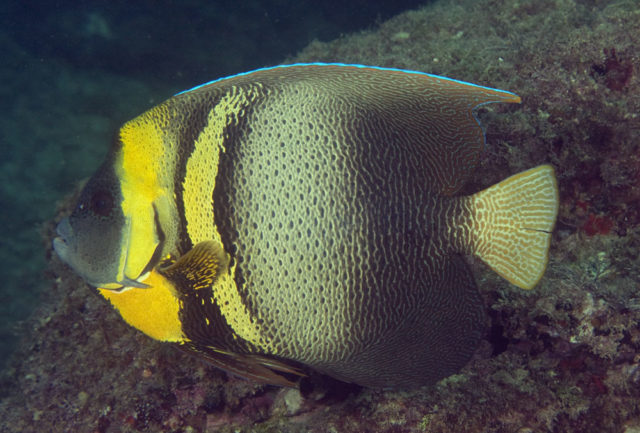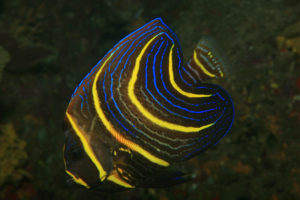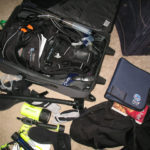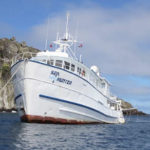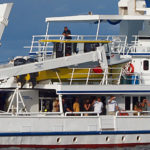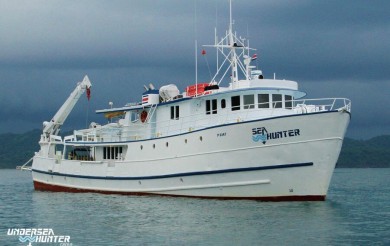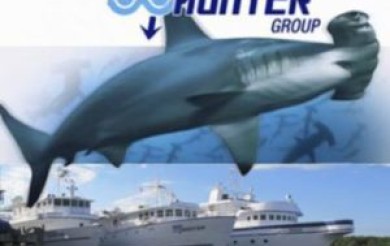Cortez Angelfish
Cortez Angelfish (Pomacanthus zonipectus)
Max. Length: 46 centimeters
Length at 1st Maturity: 27 centimeters
a value:
b value:
Depth Range: 6 – 12 meters (20 – 40 feet)
Frequency: Abundant in the Eastern Pacific Ocean
Similar to its close cousin, the King Angelfish, a Cortez Angelfish is one of the supporting actors that you can see in a shark cleaning station in Cocos Island. They are deemed important in an underwater car wash station where they are responsible for getting rid of those hard parasites that are clinging toughly in the shark’s skin. But when off-duty, you can usually them relaxed in rocky surfaces of the reef and sandy bottom areas often in pairs or in loose aggregation. On a funny side: do you think they really have a day or two of not working?
A Color Polymorphic Fish
In general, most Angelfish exhibits color polymorphism. Meaning, that juveniles has a different body color pattern and changes once it reaches maturity.
During its juvenile stage, you will notice that the body of a Cortez Angelfish is generally black in color with yellow and blue semi-circle stripes. These stripes starts to radiate from the tail and the circumference of the semi-circles will start to increase as it traverse towards the head portion. As the angelfish grows old, these stripes will eventually fade leaving only a singular yellow band on the mid-portion of the body and some yellow undertone on the head portion. As for the blue stripes, you can still its remnants, but now it is located on the outer margins of its dorsal fin.
They also differ in behavior. Juveniles tend to be solitary, territorial and thrive in shallow areas like tide pools while adults stay in pair or in a group and occupy the outer ledges of the reef where a shark cleaning station is often found.
Threatened by Live Aquarium Fish Trade
Although it may not be happening in Cocos island, but Cortez Angelfish are being harvested out at sea alive and being traded as an aquarium fish. While the thought of maintaining a saltwater aquarium is good for a layman, but for us divers, it is not.
In reality, having a saltwater aquarium with a Cortez Angelfish is not really a good idea. First of all, it defeats the purpose of having a natural ecosystem. Second, an adult Cortez Angelfish requires at least 250 gallon aquarium capacity. Third, it does not go well with other fish in the tank as well as with other aquarium inhabitants. It may eat sponges, mantles of clam and soft corals which usually goes with a saltwater aquarium. Lastly, it requires high-quality nutritional foods to maintain a good health.
While it is true that observing Cortez Angelfish in an aquarium is more comfortable, the experience is more enjoyable and rewarding when you interact with them in the wild. For us, the natural underwater encounter of Cortez Angelfish, as well as any other fish species, can really be appreciated when you observe and interact with them in their natural habitat. So if you have any plans of setting up a saltwater aquarium, please reconsider that plan and go diving instead in Cocos island where no aquarium can match its features.
Reference
Fishbase: www.fishbase.org
IUCN Redlist of Threatened Species: www.iucnredlist.org
Discover Life: www.discoverlife.org
Video courtesy from supersugar60
You also might like these:
Cocos Island Liveaboard Trips for 2019
Due to high demand of liveaboard trips to Cocos island, as early as this year, we are publishing the 2019 trips for you to choose your preferred schedule and prepare for the ultimate diving adventure of your life. Reserve your seat to Cocos Island as they are selling like hotcakes. Schedule of Liveaboard Trip to […]

